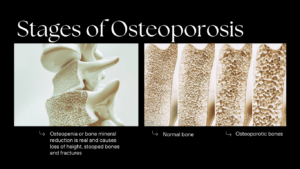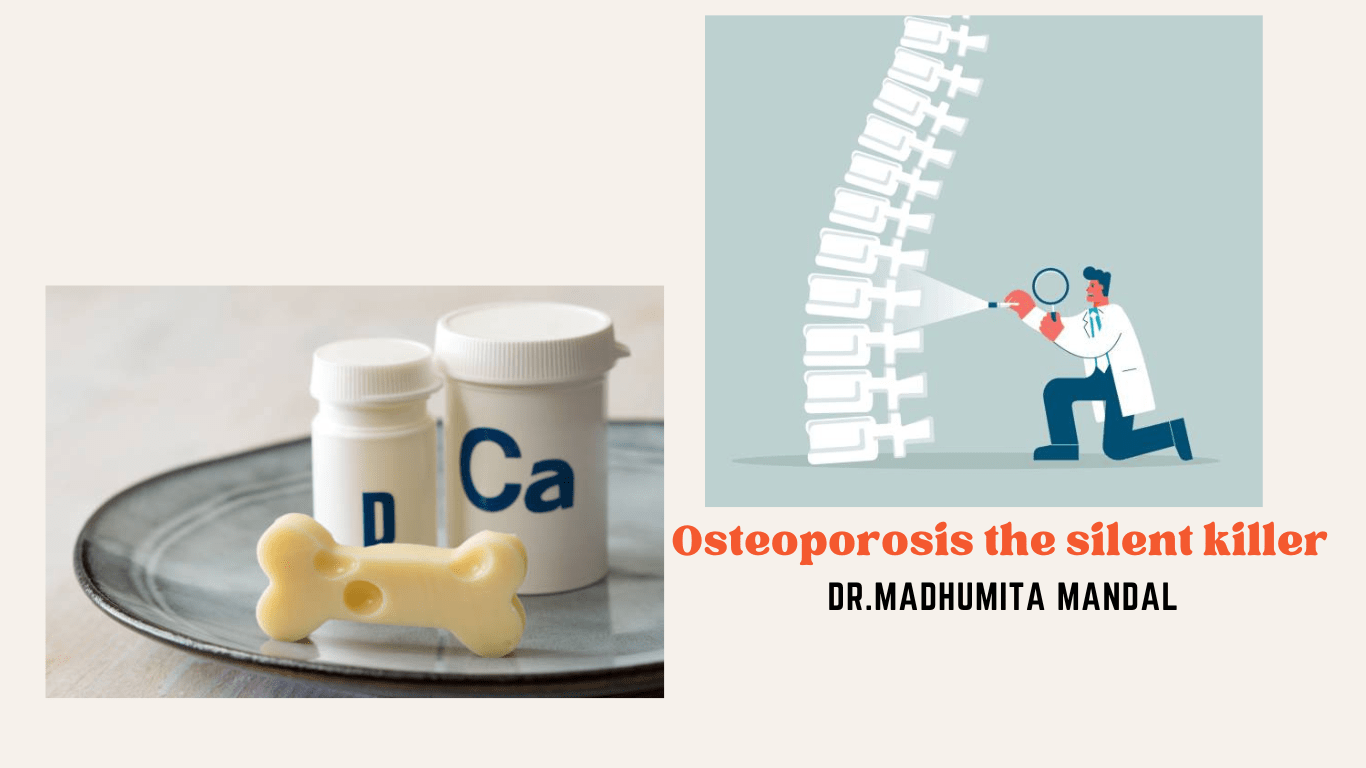Don’t blame your body for letting you down and not upholding its end of the bargain to support and sustain you through life. Be alert and aware to find early signs of osteoporosis!!
What is the age when you start showing signs of bone weakness and become pro to an osteoporosis patient?
Any guesses….
30, 40,50 or 60?
It depends on multiple factors. Family history, diet and exercise decide how fast or slow you can develop porous bones. When you are young in your late twenties, the framework inside the bones is robust and new bone formation and resorption or breakdown takes place in equal amounts. At around late forties, bone breakdown outpaces bone formation and bone loss accelerates. Women are prone to bone porosity development at the time of menopause. The risk for osteoporosis — low bone density is higher in women because female bones are smaller and less dense than male bones. Though, men are not behind in the race. They are at risk too. A family history of osteoporosis related fractures boosts odds for both the sexes. This public health problem has brought a heavy burden to the global economic, social and health development. Osteopenia or low bone density compared to others of the same age may sometimes be a precursor.
Bone formation starts early from birth and matures till adulthood and reaches peak in early twenties, when they are at their strongest, densest and least likely to fracture. Bone replacement is a continuous process, with new bone replacing the old ones. But in case of osteoporosis, more bone gets lost than replaced. The end result is bones becoming brittle and ready to break. Osteoporosis causes fractures with even minor fall or bumps against cars or even with a dash against wooden furniture. A break can happen at any place on your skeleton, but wrist, hip and spine are the most common. Fractures due to osteoporosis have a devastating impact on millions of people worldwide and result in enormous socio-economic too.
What are the symptoms of osteoporosis?
Osteoporosis is sometimes called a silent disease. A few symptoms needs careful attention-
- Pain in the lower back
- Frequent bone fractures
- Shortness of breath (smaller lung capacity due to compressed disks)
- Change in posture (stooping or bending forward)
- Loss of height

Diagnosis
Bone density tests are recommended for all women age 60 and older, and for younger women at higher-than-normal risk for a fracture. Men may want to discuss osteoporosis screening with their doctor if they’re over age 70 or at high risk for thinning bones.
A bone densitometry test (DXA or DEXA scan) measures your bone mineral density (BMD). Your bone density is then compared to the average BMD of an adult of your sex and race at the age of peak bone mass (approximately age 25 to 30). The result is your T score.
- A T score of -1 to +1 is considered normal bone density.
- A T score of -1 to -2.5 indicates osteopenia (low bone density).
- A T score of -2.5 or lower is bone density low enough to be categorized as osteoporosis.
It’s important to know that every one-point drop below 0 (0 is BMD on par with a 25- to 35-year-old) doubles the risk for a fracture. Your doctor may also use your BMD results to help calculate an estimation of your risk for any fracture and for a hip fracture in the next 10 years. This fracture prediction is based on your bone density and other risk factors for fracture, such as family history and smoking.
Factors responsible for triggering osteoporosis-
Genetic factors– Genetic factors play an important role in the development of osteoporotic fractures. According to the American Academy of Orthopaedic Surgeons (AAOS), this is especially true if you have a history of bone fractures on your mothers side of the family.
Unhealthy diet & lifestyle-
Low milk diet, less exposure to sunlight, lifestyle choices like alcohol & smoking can accelerate bone depletion.
Aim for calcium levels:
1,000 milligrams daily for women age 50 and younger and for men 70 and younger
1,200 milligrams daily for women over age 50 and men over 70
The one exception: People on dialysis due to kidney failure should talk with their doctor about the right calcium intake for them.
Take in calcium from food or supplements. Calcium-rich foods include:
low-fat milk or yogurt (300 mg per cup)
greens, such as kale (100 mg in 1 cup cooked kale)
tofu that uses calcium for firmness (253 mg per half cup)
beans
calcium-fortified foods, like breakfast cereals and orange juice (up to 1,000 mg per serving)
Calcium on food labels is given as a percentage of 1,000 mg, so if the label says “45 percent,” a serving of that food provides 450 mg of calcium.
Add Vitamin D supplements in your diet (between 600-800 IU for aging adults)
Potassium improves calcium metabolism (avg. 4700mg per day) Bananas, beans, spinach should be included in diet.
Some Medications
Anti-seizure medications, cancer drugs and steroids may lead to decrease in bone density.
Cut back on caffeine and alcohol- Drinking either in excess can reduce your bone density.
Quit smoking- Tobacco use leads to significant bone loss in women and men, longer healing times after a fracture and a higher risk for complications. Quitting can reduce the added risk.
Exercises
Stay active. Any activity that puts your bones to work helps in remodeling that keeps them strong. Walking, dancing and weight training can go a long way. Try to remain injury-free while doing these activities.
Bones are your body’s best assets. Try to keep them healthy!

